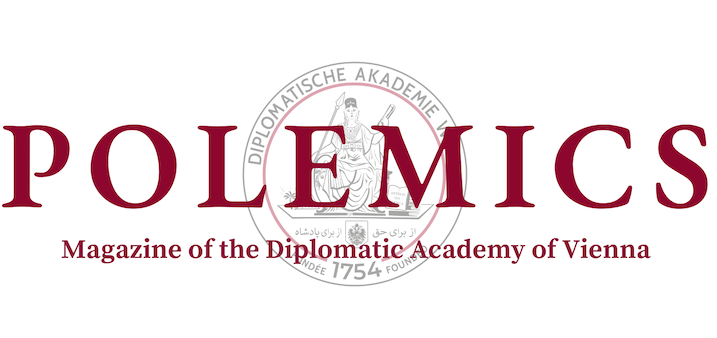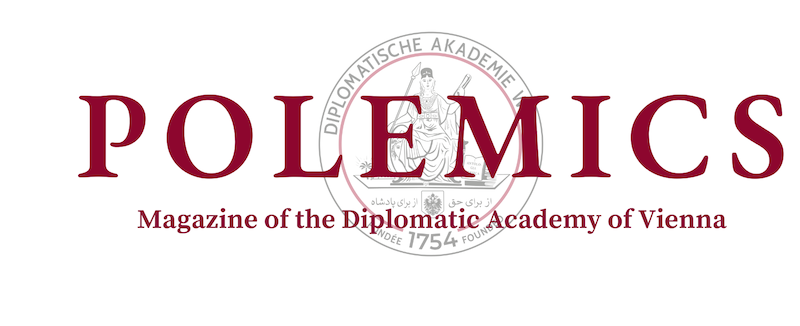The European Union finds itself at a crossroads yet again. A slow recovery from the COVID-19 crisis as well as the ensuing price increases across the economy have challenged the EU’s standing as a global player. Stiff competition in crucial sectors from both China and the US is adding pressure on the EU’s economy. All of this is happening at the worst possible time, with threats such as climate change looming on the horizon.
Having recognised the challenge that climate change in particular poses not only to humans but also to the EU’s budgets, there have been increasing efforts to decarbonise and adapt to climate change in a competitive way. These efforts primarily need one thing: funding. Unfortunately, financing is difficult to come by, especially since the introduction of the new EU fiscal rules in April of 2024. These rules have the potential to undermine necessary green investment, says Dr. Philipp Heimberger, head of the macro research group at the Vienna Institute for International Economic Studies.
But what are the fiscal rules to begin with and why were they put in place? According to Dr. Heimberger, in simple terms, these rules restrict the room for fiscal policy, such as
spending or cuts, in the member states. In essence, fiscal policy reflects the government’s priorities, with fiscal rules crafted to constrain both debt and deficit levels. But why does the EU care about that?
The European Institutions responsible for the budget, such as the Parliament and the Council, want the debt of the member states to be sustainable, as they intend to avoid a loss of confidence by investors which could lead to financial crises, such as in Greece in the early 2010s. The new fiscal rules, Dr. Heimberger explains, aim at more flexibility between the member states to adjust their fiscal situation instead of the rigid Maastricht criteria. The European Commission runs debt sustainability analyses to assess the member states’ situations and, if necessary, puts forward a reference adjustment path, which focuses on how much money needs to be saved through spending cuts or tax hikes. The flexibility of the new regime reflects the debate among experts around a sustainable level of state debt.
The lion’s share of member states, especially after the polycrisis, needs to adjust their fiscal paths over the next few years to remain in line with the newly imposed rules. The easiest way to save money and reduce budgetary pressures is cutting planned investment. Green investment is likely to be up on that chopping block. It is not just cuts to planned investment, though, that are likely to inhibit the green transition, says Dr. Heimberger, among other critics.
The new fiscal rules also do not incentivise investment in general, which poses a big problem to the climate goals, as they do not include exemptions for green investments. Dr. Heimberger stresses the need for at least 1% of EU GDP in public investment per year (amounting to about €171 billion in 2023) to be able to transition to a sustainable economy. With added structural pressures, such as ageing populations and the need for defence spending, completing the green transition becomes an even more daunting task.
All of this seems overwhelming. There seems to be no way out. Dr. Heimberger highlights an issue on the other side of the debate, though. Not investing in the green transition also costs money. The damages from the increased frequency of extreme weather events alone threaten a states’ finances, especially those vulnerable to climate change — Spain and Italy come to mind.
So, what is there to do? Do member states need to break the EU’s rules to be able to sufficiently invest in the green transition? An unlikely scenario, says Dr. Heimberger. Breaking fiscal rules results in fines by the European Union, under something called the excessive deficit procedure. Given the situation, member states do not want to put even more pressure on their budgets. If debt rises anyway, it will be necessary to evaluate it on a case-by-case basis. Once again, there is no definitive threshold at which debt inevitably becomes a problem.
If the pressure to invest at the member state level is big enough, for example if farmers in Spain are faced with crop failure, member states will try to solve this on the EU level. But what would that look like? The EU has come up with instruments to tackle big crises before, it is not unlikely that this could happen again. A European debt instrument, such as the one proposed in the Draghi Report could be a third way between doing nothing and breaking rules. The problems here lie with the political aspects, as there is a stark ideological divide between countries when it comes to public spending, says Dr. Heimberger. Frugal countries such as Austria have an aversion to taking on new debt.
Thinking back to the discussions between the member states during the financial crisis of 2008, the same talking points will echo in this case. Why should states less vulnerable to climate change, such as Germany, pay for more vulnerable states, such as Italy? Without talking about fault, these arguments are dangerous on their own merits. The financial crisis of the late 2000s, which affects Europeans to this day, could only be overcome by a rescue package, fiscal adjustment and a European Central Bank that stood behind this political will — to repeat the slogan from that time:
“Whatever it takes!”. Though the political discussion will be tough, and all factions will most certainly use every trick in the book to get their way, raising this point is more than necessary.
Trying to predict the future with the complexity at hand is a fool’s errand. But two things are very clear, according to Dr. Heimberger. First, climate change is a cross-border problem — it can’t be solved by member states acting on their own. This is a reality that states less vulnerable to climate change need to come to terms with. Second, Europe needs an orderly transition to a sustainable economy. A messy, uncoordinated approach will both hurt wallets and impede climate goals.
The project of a “European Union” will be tested once more, in an unprecedented way. It is up to both the Union and its member states to choose the path ahead. With more integration and bold impulses, the transition to a green economy can be managed. If rules need to be broken and member states are left alone, the EU is poised to fail this test.
About the expert
Dr Philipp Heimberger is a researcher at the Vienna Institute for International Economics (WIIW) and holds a PhD from the Vienna University of Economics and Business (WU), where he also completed his venia legendi (Habilitation). He heads the macro research group at the WIIW and is an expert in macroeconomics and public finance. https://wiiw.ac.at/philipp-heimberger-s-1138.html









